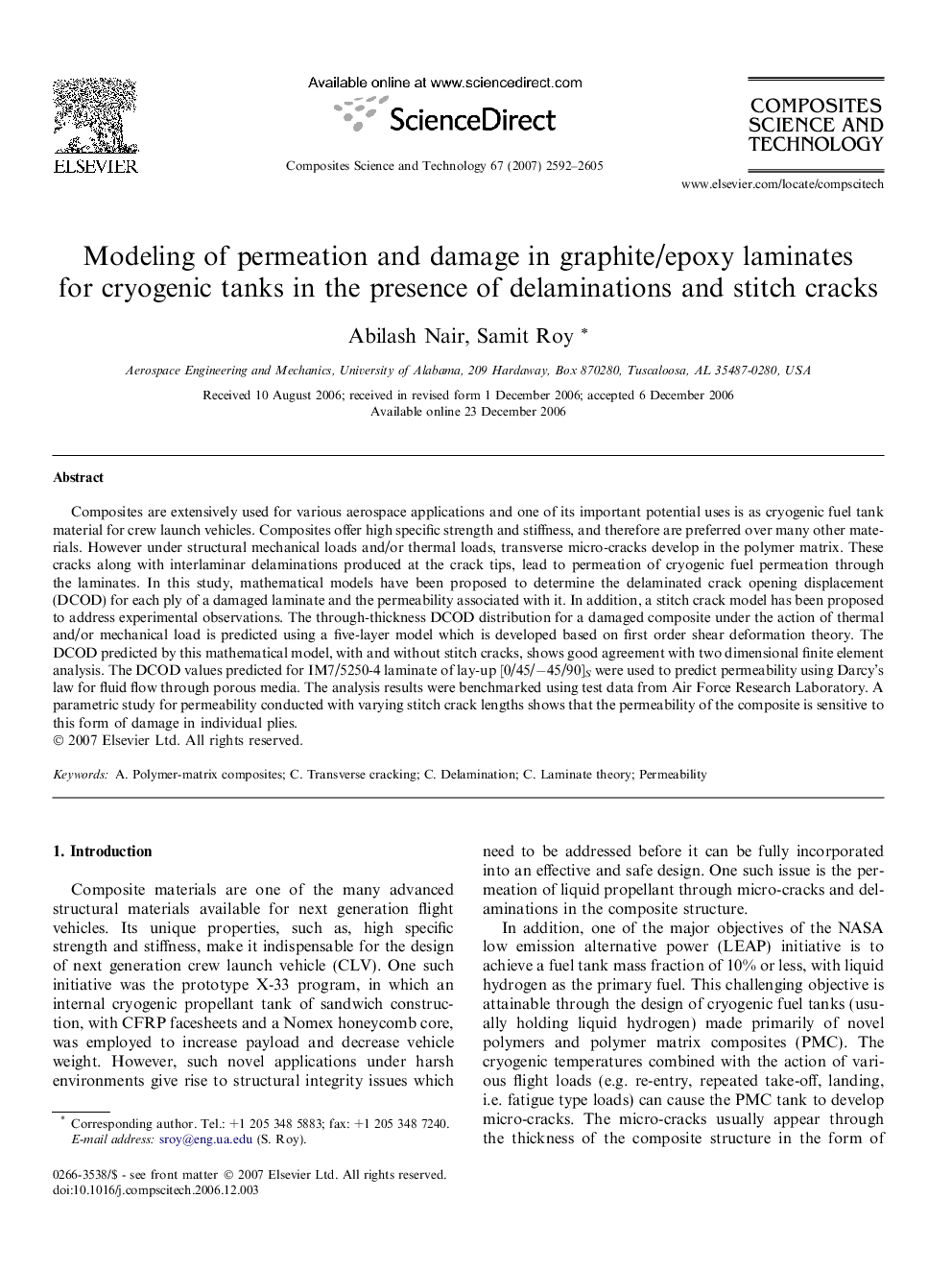| Article ID | Journal | Published Year | Pages | File Type |
|---|---|---|---|---|
| 822438 | Composites Science and Technology | 2007 | 14 Pages |
Composites are extensively used for various aerospace applications and one of its important potential uses is as cryogenic fuel tank material for crew launch vehicles. Composites offer high specific strength and stiffness, and therefore are preferred over many other materials. However under structural mechanical loads and/or thermal loads, transverse micro-cracks develop in the polymer matrix. These cracks along with interlaminar delaminations produced at the crack tips, lead to permeation of cryogenic fuel permeation through the laminates. In this study, mathematical models have been proposed to determine the delaminated crack opening displacement (DCOD) for each ply of a damaged laminate and the permeability associated with it. In addition, a stitch crack model has been proposed to address experimental observations. The through-thickness DCOD distribution for a damaged composite under the action of thermal and/or mechanical load is predicted using a five-layer model which is developed based on first order shear deformation theory. The DCOD predicted by this mathematical model, with and without stitch cracks, shows good agreement with two dimensional finite element analysis. The DCOD values predicted for IM7/5250-4 laminate of lay-up [0/45/−45/90]S were used to predict permeability using Darcy’s law for fluid flow through porous media. The analysis results were benchmarked using test data from Air Force Research Laboratory. A parametric study for permeability conducted with varying stitch crack lengths shows that the permeability of the composite is sensitive to this form of damage in individual plies.
